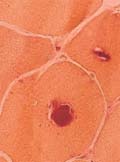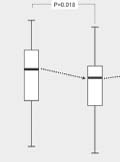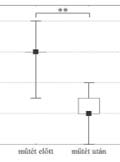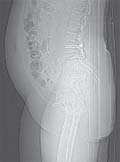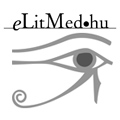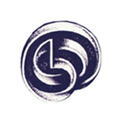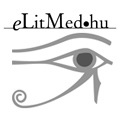The eLitMed.hu medical portal uses computer cookies for convenient operation. Detailed information can be found in the Cookie-policy.
Clinical Neuroscience - 2013;66(03-04)
Content
[Antiepileptic drugs in treatment of epilepsy and follow up of their efficacy]
[Epilepsy is one of the most common neurological diseases usually demanding long term treatment. The prime goal of therapy is to achieve seizure freedom with avoidance of side effects. Precise diagnosis is fundamental selecting the proper antiepileptic drug(s). In addition of wide-spectrum antiepileptics, selective syndrome-specific antiepileptic drugs are available. Pharmacological features of the new antiepileptics allow more personalized clinical use. Aim of this paper is to provide a comprehensive pragmatic review of therapeutic possibilities and recommendations currently accessible in Hungary.]
[Inclusion body myositis - a rarely recognized disorder]
[Inclusion body myositis is the most common disabling inflammatory myopathy in the elderly. It is more frequent in men and after the age of 50 years. Inflammatory and degenerative features coexist. There is a T-cell mediated autoimmunity driven by in situ clonally expanded cytotoxic CD8-positive T-cells invading non-necrotic muscle fibres expressing MHC-I antigen. The hallmarks of degeneration are the deposition of protein aggregates and the formation of vesicles. The course of the disease is slow and the diagnosis is usually set after several years. The muscle weakness and wasting is assymetric, affecting predominantly distal muscles of the upper extremity and proximal muscles of the legs. The signs and clinical course can be characteristic, but the diagnosis is established by muscle biopsy. There is currently no evidence based effective treatment for sIBM. Prednisone, azathioprine, methotrexate, cyclosporine and IFN-β failed. Oxandrolon did not improve symptoms. Treatment with intravenous immunglobuline (IVIG) induced in some patients a transient improvement of swallowing and of muscle strenght, but the overall study results were negative. A T-cell depleting monoclonal antibody (alemtuzumab), in a small uncontrolled study slowed down disease progression for a six-month period. Repeated muscle biopsies showed the reduction of T-cells in the muscle and the suppression of some degeneration associated molecules. An effective therapeutic mean should act on both aspects of the pathomechanism, on the inflammatory and the degenerative processes as well.]
[Effects of spinal cord stimulation on heart rate variability in patients with chronic pain]
[Background - Spinal cord stimulation has become an established clinical option for treatment of refractory chronic pain and angina pectoris, but its precise mechanism of action is unclear. We investigated the effect of spinal cord stimulation (SCS) on heart rate variability (HRV) and evaluating its influence on the sympathetic/parasympathetic balance in chronic pain. Materials and purpose - Seven patients (three men, four women) with SCS due to chronic pain were included. The SCS was programmed in three different ways: (i) to stimulate at an amplitude known to generate paresthesias (ON-state), (ii) at a subliminal level (SUB state), or (iii) switched off (OFFstate). HRV analysis was based on 5-min segments of the consecutive normal RR intervals and was performed with custom software (Kubios HRV Analysis). Results - The mean heart rate was higher in ON state compared to SUB state (p=0.018) and the high-frequency component of the HRV was lower in ON compared to OFF period (p=0.043). Other HRV parameters values did not significantly differ during the three tested periods. Conclusion - Spinal cord stimulation in chronic pain seems to be accompanied by reduced parasympathetic tone, unlike SCS in angina pectoris where previous studies found a reduced cardiac sympathetic tone. Our study might lead to understand the mechanism of action of SCS We investigated a relatively small number of patients, which is the main limitation of our study. Thus, further studies with larger number of patients are required for validation of our results.]
[10 years, 600 monitoring sessions - our experience with the video EEG monitoring of children]
[Introduction- The only Hungarian video EEG laboratorywhere children of ages 0-18 can be continuously monitoredfor several days was opened 1 June 2001 at Department ofNeurology of Bethesda Children’s Hospital.Objectives- Summarizing our 10 years of experience withthe video EEG monitoring (VEM) of children and defining theplace of VEM in the treatment of childhood epilepsy inHungary.Patients and methods- We have processed data from 597monitoring sessions on 541 patients between June 1, 2001and 31 May, 2011 based on our database and the detailedsummaries of the procedures. Results- 509 patients were under the age of 18. The average length of the sessions was 3.1 days. We haveobserved habitual episodes or episodes in question in 477(80%) sessions. 241 (40%) sessions were requested with anepilepsy surgery indication, and 74 patients had 84 opera-tions. 356 (60%) were requested with a differential diagnosisindication, and 191 (53%) cases of epilepsy werediagnosed. We most commonly diagnosed symptomaticgeneralized epilepsy (57 cases). In 165 sessions the episodein question was not diagnosed as epilepsy. Among theparoxysmal episodes we have identified events ofpsychogenic origin, movement disorders, sleep disordersand behavioral disorders. Only 3% of the differential diag-nosis procedures brought no additional clinical information.Discussion- The diagnostic efficiency in our VEM laborato-ry is in accordance with the data found in the literature.Besides epilepsy surgery VEM is recommended if suspectedepileptic episodes occur and interictal epileptiform signs arenot present or are not in accordance with the symptoms, ifthere is no explanation for therapy resistance and if paroxys-mal episodes of non-epileptic origin are suspected but theycannot be identified based on the anamnesis. VEM is also helpful in diagnosing subtle seizures. The procedure hasnumerous additional benefits in patient care and in trainingthe parents and hospital staff. ]
[Efficacy of deep brain stimulation in our patients with Parkinson’s disease]
[Background and purposes - In advanced Parkinson’s disease, medically refractory motor fluctuation or medically resistant tremor considerably affects quality of life. However, these symptoms can be mostly successfully treated by deep brain stimulation. We analyzed the efficacy of bilateral subthalamic stimulation in our patients with Parkinson’s disease. Methods - We assessed the clinical data of ten patients who have been treated in the Department of Neurology, Semmelweis University and have been operated in the National Institute of Neurosciences between 2008 and 2011. The Hoehn-Yahr scale score, the Unified Parkinson’s Disease Rating Scale score and the Parkinson’s Disease Questionnaire 39, as well as the dose of antiparkinson medication were documented prior to and one year after surgery. Results - Patient condition improved according to the Hoehn-Yahr scale, approximately by two stages. The dose of antiparkinson medication could be reduced by 63.4% (p=0.005) post operation. Unified Parkinson’s Disease Rating Scale scores decreased by 70.9% (p=0.005). 12 hours after medication withdrawal, execution of daily activity improved by 57.1% (p<0.01) and motor functions developed by 79.1% (p<0.01). Duration of dyskinesias decreased by 62.5% (p=0.018), duration of akinesia diminished by 87.5% (p=0.005). Quality of life rose by 41.6% (p<0.01). Neuropsychological tests detected improvement in verbal memory. Conclusion - With deep brain stimulation, the dosage of antiparkinson medication could be significantly reduced, with considerable improvements in motor function and quality of life. Although the number of patients is still low, good results have been established by careful patient selection, precise neurosurgical procedure and by appropriate programming and patient care.]
[Application of minimally invasive instrumental spine surgery technique in lumbal diseases of degenerative or traumatic origin]
[Paradigm change has recently taken place in spine surgery with the application of minimally invasive techniques. Minimally invasive techniques have several advantages over the open traditional techniques: less blood loss, preservation of spine muscle integrity, shorter hospitalization, early mobilization, reduced pain levels, lower risk of infection. The presented cases cover following lumbar pathologies: segmental spinal instability, LV-SI grade II. spondylolisthesis, degenerative spondylolisthesis, spine trauma. Unilateral or bilateral mini-open technique was employed in the degenerative cases, depending on symptoms and signes. If unilateral symptoms - pathology was identified, screws and rod were implanted percutaneously on the side contralateral to the pathology. The segmental fusion between vertebral bodies was always assured by a cage and autologous bone. The presented trauma case involved combined AO type A2 and B fractures. The anterior column was strengthened with vertebral body stents filled with bone cement, the posterior column was fixed with a percutaneously implanted screw rod system. Insertion of stents in the collapsed vertebra significantly increased the vertebral body height and also improved the stability of the spine. Minimally invasive spine surgery techniques appear more advantageous over the traditional open spine surgery that necessitates for large midline approaches.]
[Abstracts of the 6th Pannonian Symposium on CNS Injury 5-6th April, 2013, Pécs, Hungary]
[Abstracts of the 6th Pannonian Symposium on CNS Injury 5-6th April, 2013, Pécs, Hungary 2013;66(03-04)]
[Péter Halász, Róbert Bódizs: Dynamic structure of NREM sleep]
[We spend four fifths of our sleep time in nonREM (NREM) sleep. The rather strange designation of this sleep state was a consequence of the fascination by rapid-eye-movement sleep (REM sleep) after its discovery in the middle of the last century.]
[Better life expectations of SM patients: 21 years follow up of patients treated with interferon beta-1b]
[Better life expectations of SM patients: 21 years follow up of patients treated with interferon beta-1b 2013;66(03-04)]
1.
Clinical Neuroscience
[Headache registry in Szeged: Experiences regarding to migraine patients]2.
Clinical Neuroscience
[The new target population of stroke awareness campaign: Kindergarten students ]3.
Clinical Neuroscience
Is there any difference in mortality rates of atrial fibrillation detected before or after ischemic stroke?4.
Clinical Neuroscience
Factors influencing the level of stigma in Parkinson’s disease in western Turkey5.
Clinical Neuroscience
[The effects of demographic and clinical factors on the severity of poststroke aphasia]1.
2.
Clinical Oncology
[Pancreatic cancer: ESMO Clinical Practice Guideline for diagnosis, treatment and follow-up]3.
Clinical Oncology
[Pharmacovigilance landscape – Lessons from the past and opportunities for future]4.
5.




